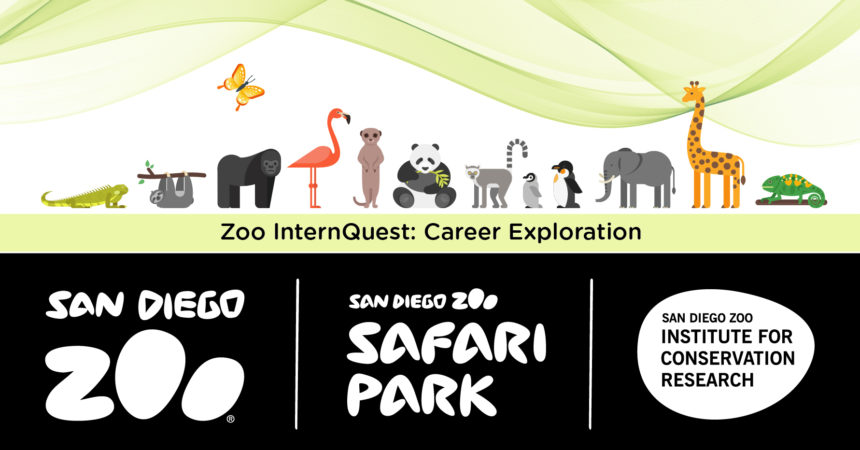Zoo InternQuest is a seven-week career exploration program for San Diego County high school juniors and seniors. Students have the unique opportunity to meet professionals working for the San Diego Zoo, Safari Park, and Institute for Conservation Research, learn about their jobs, and then blog about their experience online. Follow their adventures here on the Zoo’s website!

This week we learned all about giraffes from Ms. Erica Rustich, a Senior Keeper at the San Diego Zoo who primarily works with this magnificent megafauna. Ms. Rustich grew up right here in San Diego and lived near the Safari Park. Her and her family were always at the Safari Park – and the interactions she had at a young age with the Park’s animals helped inspire her to pursue a career working rooted in caring for a variety of different species.
Right now, Ms. Rustich is the primary giraffe keeper at the Zoo, but she also works with a few other animals such as the Tasmanian devil. A typical day for her involves tasks like checking on the giraffes, feeding them, cleaning their exhibit, and providing the same services for the Tasmanian devils. The giraffes also have daily training sessions to make any medical procedures and husbandry on the animals as stress free as possible. This training comes in handy during medical emergencies and allows the giraffes to receive the best treatment as quickly as possible with little or no stress on the animal.
The Zoo’s giraffes, as well as their Tasmanian devils, play an important role for their species outside of the Zoo. Many people do not realize that giraffes are facing a silent extinction – the reticulated giraffe alone has already lost about 70% of their population. To this day, scientists are still learning new things about giraffes, such as the discovery of different giraffe species! Giraffes’ numbers have been dropping for a few reasons, one of which being poaching and habitat loss. As a means to combat these stresses, the Zoo participates in global conservation efforts. These efforts include computer programs that are able to identify a giraffe in a picture by looking at the pattern on its neck. This project helps monitor giraffe populations, and gives researchers an overall picture of how well giraffes are doing in a certain area. Tasmanian devils are endangered as well, and their numbers in the wild are currently around 10,000 to 25,000. Aside from almost being completely hunted to extinction, the Tasmanian devil is one of a four species that is susceptible to a form of contagious cancer which has been severely depleting their numbers these past few decades. If the cancer were to reach the populations of Tasmanian devils in zoos and special breeding programs, they could become completely extinct.
Ms. Rustich stressed the importance of the interactions between people and animals who need their help. Those encounters stick with someone for the rest of their lives and inspires them to conserve the animals they had the chance to see up close and in person. This week, we all had the chance to feed the Zoo’s giraffes with Ms. Rustich, and it left a huge impact on both myself and my fellow interns. Hearing about giraffes and their struggle in the wild and then getting to meet some of these magnificent creatures is an experience that can never be forgotten.
Humanity has caused a lot of issues for wildlife, but it also has the power to undo the damage it has done. Educating others and letting them experience first hand the absolute beauty of our natural world is what helps conservation efforts. Forging that deep connection with nature, and all its fascinating and beautiful creatures, is what gets people to truly care about their actions and ensure that they will go on to fight for their conservation.
“One touch of nature makes the whole world kin” – William Shakespeare
Alana Hurd, Conservation Team
Week Six, Winter Session 2019


